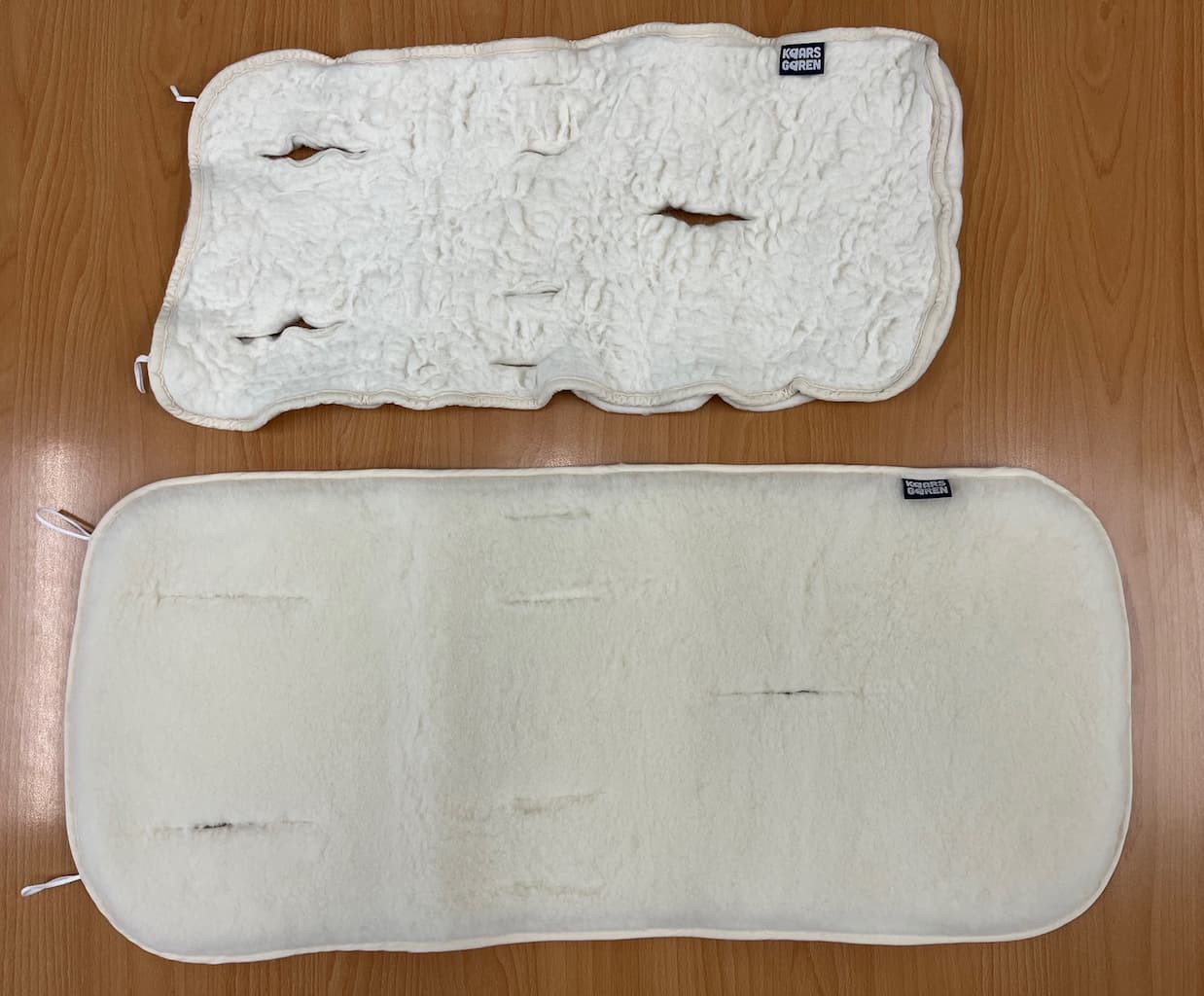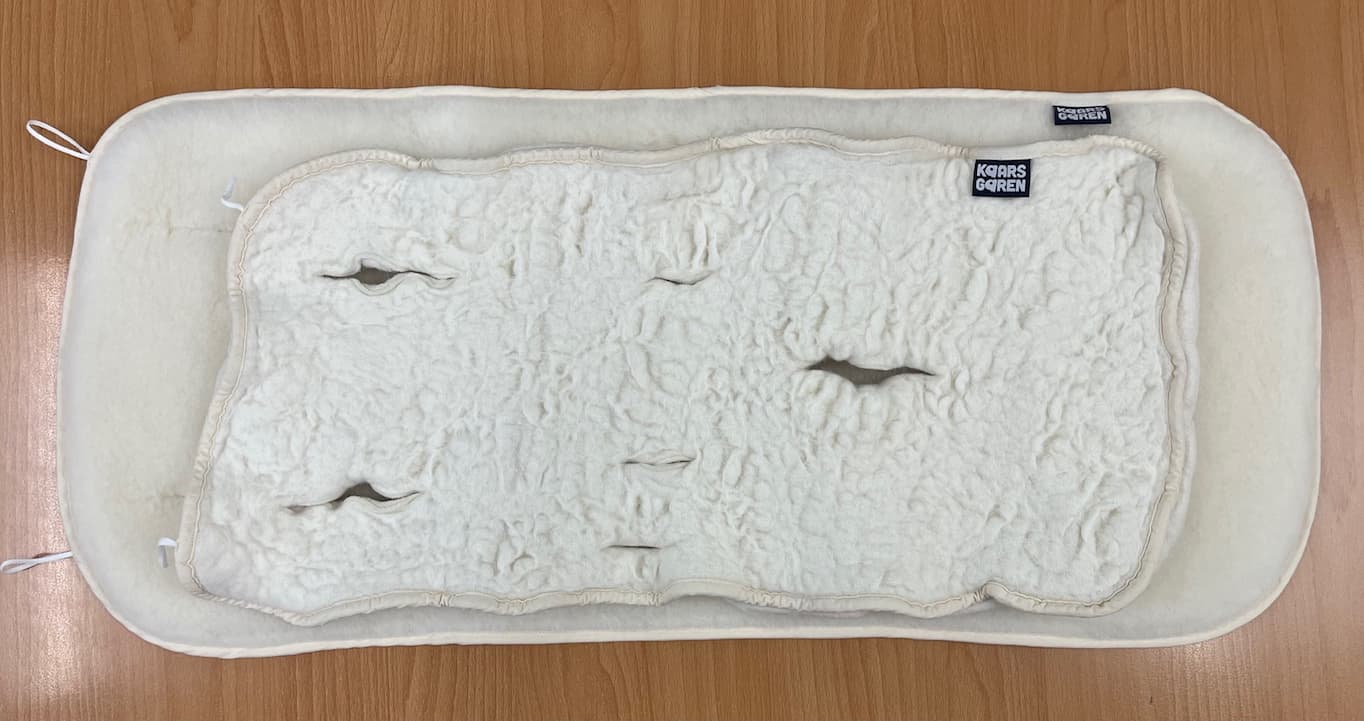Merino wool is an exceptional material – warm, breathable, antibacterial, and self-cleaning. However, to preserve all these natural qualities, it requires gentle care. Here’s what can irreversibly damage merino wool and how to wash it properly.
What Happened in the Photos



Merino fibers have a scaly surface. When exposed to temperature changes, mechanical friction, and inappropriate detergents, these scales lock together – the wool becomes felted, stiff, and loses its softness and elasticity.
What Damages Merino the Most
- Temperature shock – a difference of more than 5–10 °C between washing and rinsing triggers felting.
- Spinning and wringing – high speed damages and deforms the fibers.
- Drying on heaters or in a tumble dryer – heat destroys the natural lanolin and fiber structure.
- Fabric softener – sticks fibers together and reduces absorbency and breathability.
- Universal detergents, bleach, and enzymes – too aggressive for delicate keratin fibers.
- Long soaking or strong rubbing – leads to felting.
- Homemade “cleaning hacks” – such as baking soda, vinegar, alcohol, or citric acid change the pH and damage wool structure.
Kaarsgaren Recommendation: Wash merino by hand using wool detergent. Machine washing is – use Wool program with very gentle settings.
How to Wash Merino Wool Properly
Option A – Hand Wash (Recommended)
- Use lukewarm water 25–30 °C – same temperature for washing and rinsing.
- Add a special wool detergent (no softener, neutral pH).
- Gently press the fabric, do not rub or wring.
- Rinse in water of the same temperature until clean.
- Remove excess water by pressing in a towel – do not twist.
- Lay flat to dry in a well-ventilated area, away from direct sunlight and heat sources.
Option B – Washing Machine
- Select Wool program, max temperature 30 °C.
- No spin.
- Wash separately, ideally in a wash bag.
- Use only wool detergent – no softener or homemade cleaners.
- Do not tumble dry. Shape gently and dry flat.
Quick Care Between Washes
- Air out regularly – merino is self-cleaning and resists odors.
- Treat stains locally with lukewarm water and wool detergent.
- Once dry, gently brush the surface to restore fluffiness.
- Occasionally use a lanolin treatment to restore fiber protection.
Frequently Asked Questions
Why can’t I use fabric softener or vinegar?
Softener glues fibers together, while vinegar or baking soda alter the natural pH of wool, reducing its softness and elasticity.
Can I wash merino at 40 °C?
Not recommended. Even a 5 °C difference between washing and rinsing water can trigger felting. Stick to 30 °C.
What if the merino is already stiff?
Unfortunately, felted merino cannot be restored. Continue using it gently until it wears out naturally.
The Benefits of Merino Wool – Why It’s Worth It
- ✅ Thermoregulating – keeps you warm in winter and cool in summer.
- ✅ Natural antibacterial properties – resists odor even after prolonged use.
- ✅ Excellent breathability and moisture absorption – keeps skin dry and comfortable.
- ✅ Self-cleaning – often needs only airing instead of washing.
- ✅ Soft and gentle – suitable even for sensitive baby skin.
- ✅ Sustainable and renewable material – obtained by ethical sheep shearing.
- ✅ Long lifespan – with proper care, it stays beautiful for years.
Merino wool is not only a comfortable but also an eco-friendly choice. With the right washing and drying care, your merino inserts or footmuffs will serve for many seasons, staying soft, cozy, and functional.


